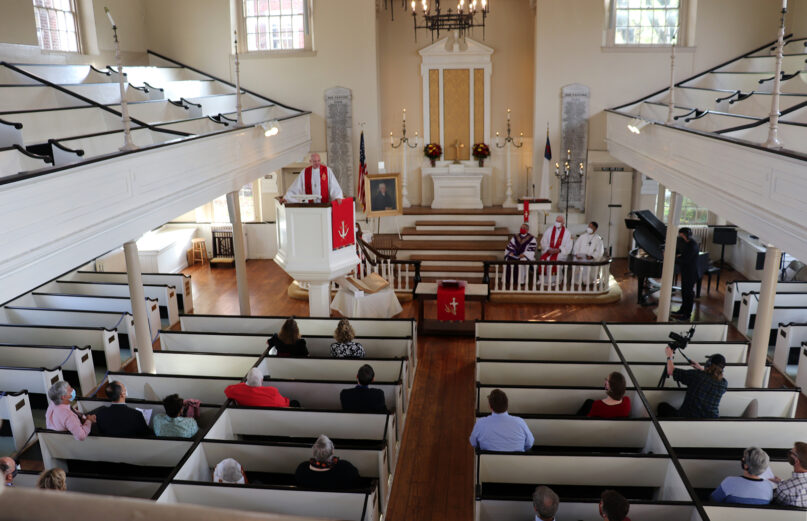This is one of a series of stories related to the 250th anniversary of the arrival of Methodist leader Francis Asbury in the United States.
PHILADELPHIA (RNS) — A couple of days and 250 years after Francis Asbury arrived in the U.S. from England to spread the Methodist approach to Christianity, a white-haired, knickers-wearing actor portraying Asbury stood before the pews of Historic St. George’s United Methodist Church, a few minutes’ walk from Independence Hall, and explained why he’d come.
“The work of God was here and in God we found all that we need and there was much needed in America,” said actor-historian Peyton Dixon. “Frontiers were just as much in need of the gospel as the cities.”
Dixon spoke during a two-day celebration that concluded Sunday (Oct. 31) with a worship service in the sanctuary of St. George’s, the oldest Methodist church in continuous use in America. St. George’s activities were the culmination of events called “The Asbury Crossing: Responding to Call” that featured clergy, musicians and historians marking the man and his mission.
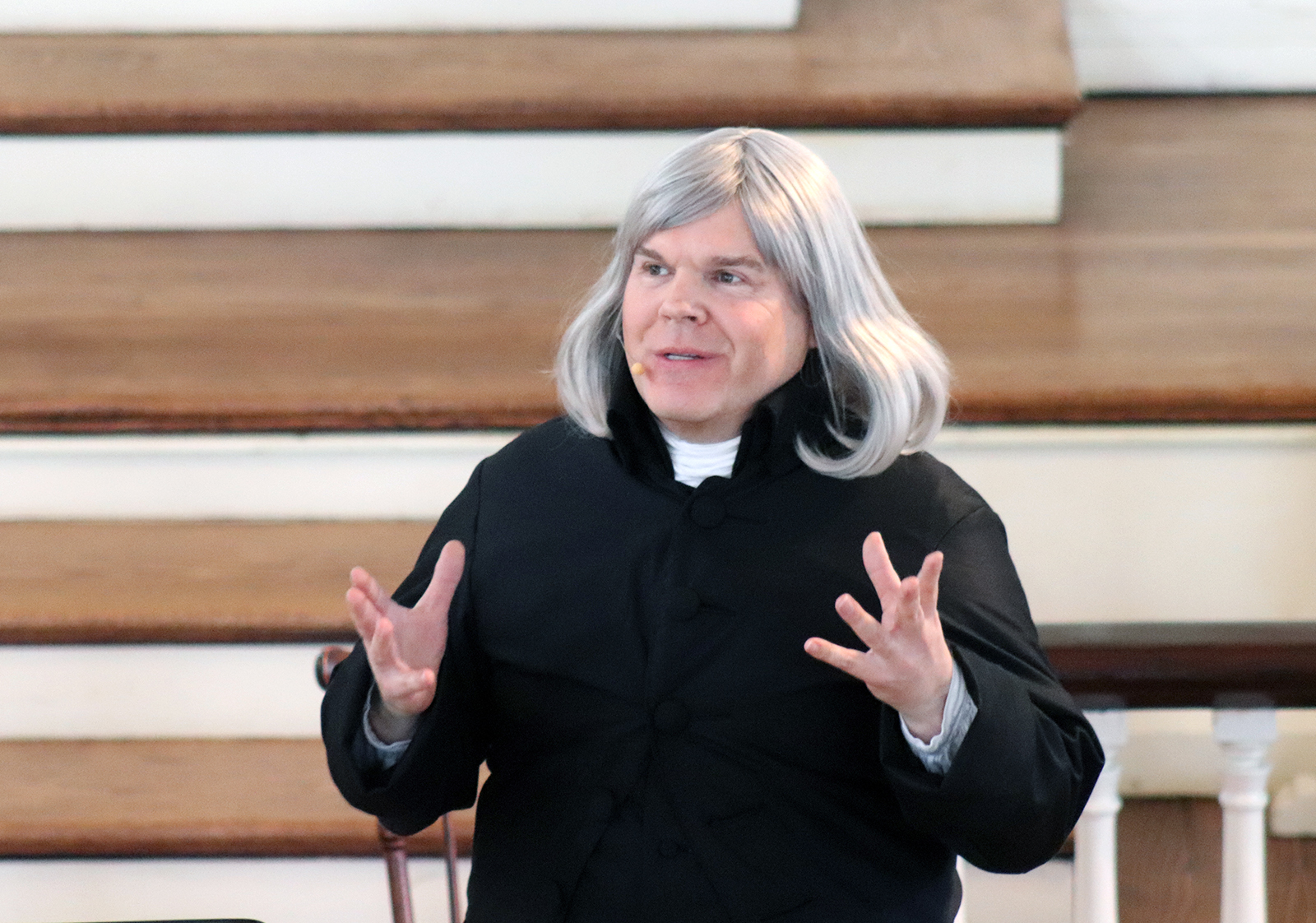
Actor-historian Peyton Dixon portrays Francis Asbury at Historic St. George’s United Methodist Church, Saturday, Oct. 30, 2021, in Philadelphia. RNS photo by Adelle M. Banks
The celebration of the 250th anniversary of Asbury’s arrival started in Bristol, England, where Asbury began his nausea-filled, eight-week journey by sea. After his welcome at St. George’s on Oct. 27, 1771, he was ready to traverse the country with his Christian message. His ministry in the U.S. would last 45 years, and he would become the first elected bishop of the Methodist Episcopal Church, what is now the United Methodist Church after a merger in 1968 of the Methodist Church and the Evangelical United Brethren Church.
Asbury became well known to Methodists and non-Methodists alike, traveling by horseback at least 130,000 miles, crossing the Allegheny Mountains dozens of times, according to Asbury biographer John H. Wigger, the keynote speaker on Saturday at St. George’s. Asbury preached more than 10,000 sermons and was “more widely recognized face to face” than George Washington and Thomas Jefferson.
“For many years he visited nearly every state once a year and traveled more extensively across the American landscape than probably any person of his day,” said Wigger, author of “American Saint: Francis Asbury and the Methodists.”
RELATED: 250 years ago, Methodism came to the US. These 3 churches show how it spread.
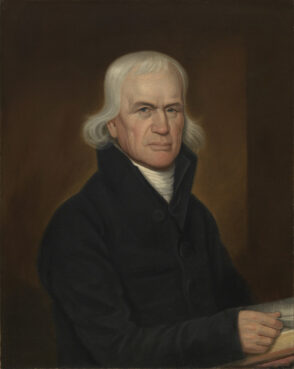
Portrait of Francis Asbury in 1813 by John Paradise. Image courtesy of National Portrait Gallery/Creative Commons
“Landlords and tavern keepers knew him on sight in every region. Parents named more than 1,000 children after him. People called out his name as he passed by on the road.”
Today, more than 100 United Methodist congregations in the U.S. are named Asbury United Methodist Church, according to the denomination. A total of more than 200 include “Asbury” somewhere in their name.
Bishop John R. Schol, the leader of the UMC’s Greater New Jersey and Eastern Pennsylvania conferences, said John Wesley, leader of the revival movement in the Church of England that gave birth to Methodism, didn’t have great expectations for Asbury when he sent him to serve as a missionary in America.
“But isn’t that the way of God, that God can take what others don’t see and make something of it?” Schol asked in his sermon at the Sunday worship service, which included music written by Wesley’s brother Charles. “And that’s what God did with Francis Asbury. God created a powerful movement called Methodism here in this new and emerging nation.”
Schol noted that in Asbury’s time, the Methodists’ Book of Discipline was a “thin” volume with “a few rules for developing a good faith,” along with liturgies and hymns.
“Let me tell you what we’ve done with that book today: We think that tending the soul of the United Methodist Church is about layering on rule after rule after rule because we think — we think — that if we create the right rules people will do the right things,” said Schol, whose denomination is facing a possible split over ordaining LGBTQ people and allowing same-sex marriage.
Rather than the current trend of “tending to the character of who’s in and who’s out,” Schol said, “Asbury would want to free us today by tending the soul, the values, the beliefs, the character, the mission of the United Methodist Church.”
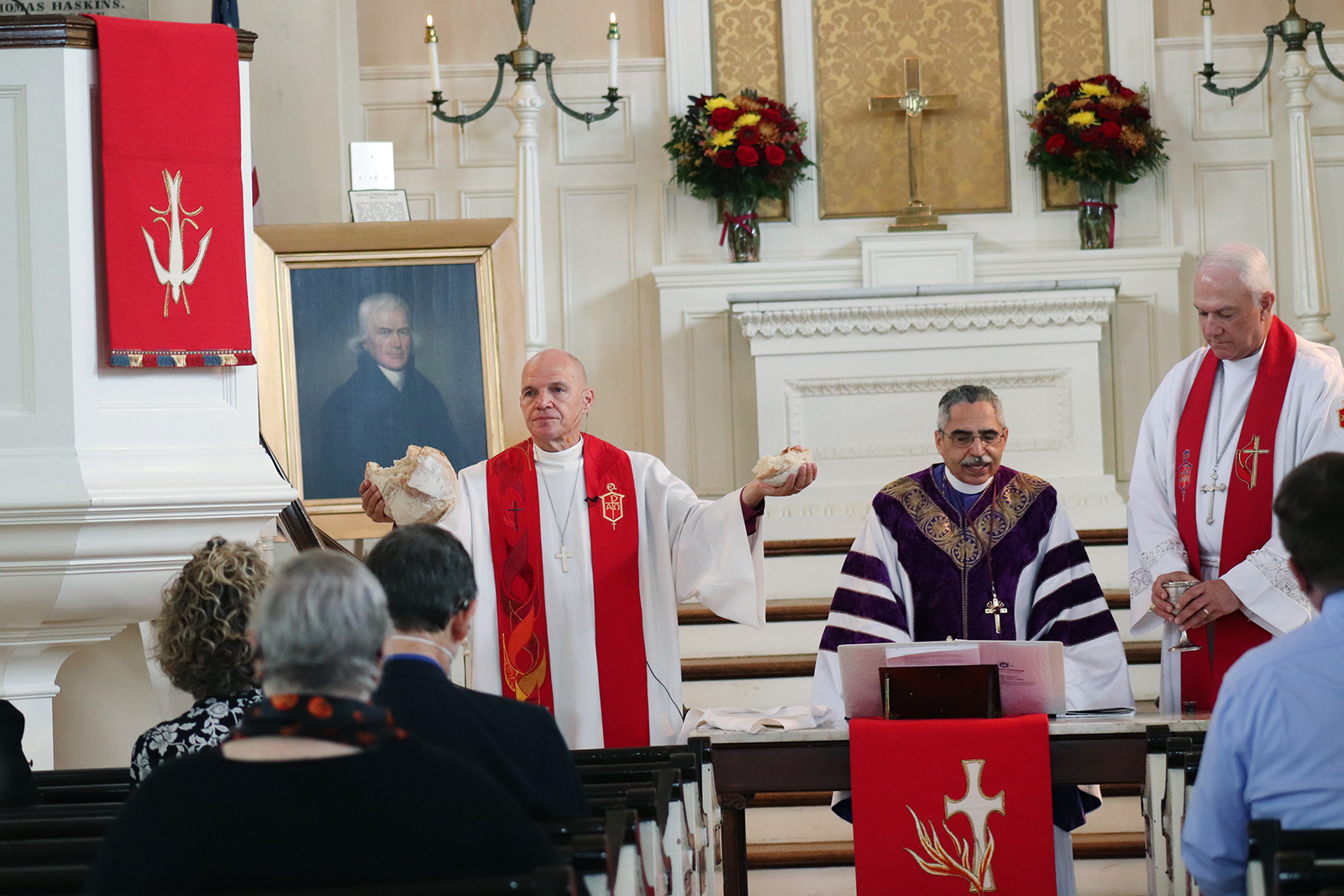
United Methodist Church Bishop John R. Schol, from left, Bishop Jeffrey Leath, ecumenical officer of the African Methodist Episcopal Church, and UMC Bishop Thomas J. Bickerton lead Communion service at Historic St. George’s United Methodist Church, Sunday, Oct. 31, 2021, in Philadelphia. RNS photo by Adelle M. Banks
Schol led the Communion service on Sunday with New York area UMC Bishop Thomas J. Bickerton and Bishop Jeffrey Leath, ecumenical officer of the African Methodist Episcopal Church. The AME Church was founded by Richard Allen in 1816 after Black worshippers were mistreated at St. George’s. Leath pointed to his presence at the service as a show of unity more than two centuries after the split.
RELATED: Methodist racial history recalled on 250th anniversary of Asbury’s US arrival
Like Schol, Leath noted Asbury’s focus on character, as well as Allen’s.
“I don’t see the emphasis on building character anymore in churches in general, but it’s sad because there can be no transformation of the world if there’s no transformation of the individual,” Leath said in an interview. “And we became so fixated on ‘Are you saved?’ when the question really should be for the church, ‘Are you changed?’”
Asbury’s influence was represented in artifacts on display and viewed by the dozens who attended the weekend’s events. Between his frequent trips, “Francis Asbury hung his saddlebag here,” said the Rev. Mark Salvacion, current pastor at St. George’s, in an earlier interview.
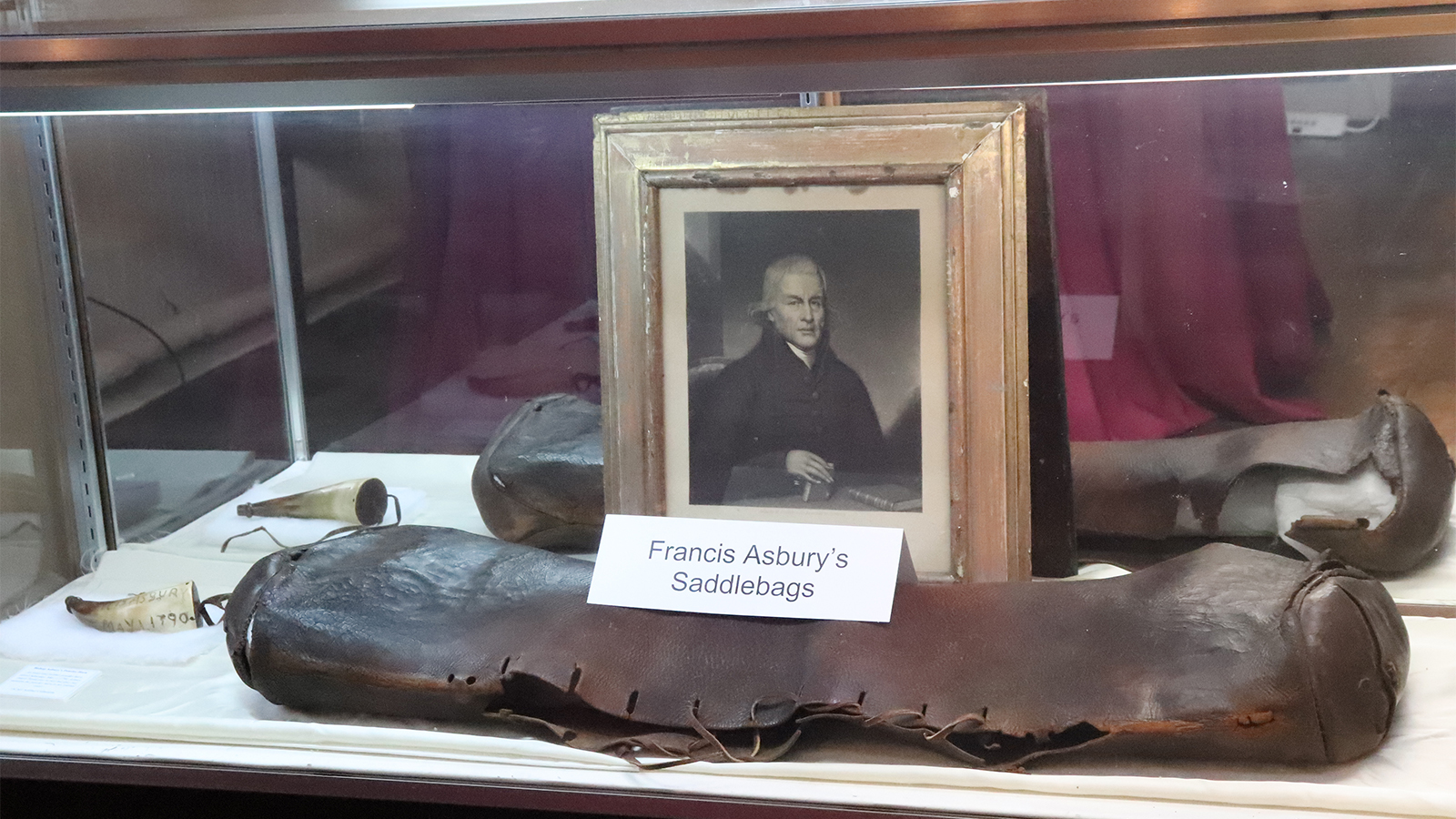
Francis Asbury’s powder horn, left, and saddlebags on display at Historic St. George’s United Methodist Church, Saturday, Oct. 30, 2021, in Philadelphia. RNS photo by Adelle M. Banks
In the sanctuary, beside curving stairs leading to the pulpit, stood a large Bible Asbury gave to the church. Just outside the sanctuary was a case displaying a comb, eyeglasses and a watch that had belonged to the Methodist leader. In the social hall a glass case held Asbury’s powder horn and saddlebags.
Ashley Boggan Dreff, general secretary of the UMC General Commission on Archives and History, explained the powder horn was a necessity. “Traveling as much as he did on horseback, you’re gonna come across wild animals,” she said.
Asbury’s legacy endures, Wigger said, in his “life of legendary piety and devotion.” The traveling preacher “used poverty to keep himself honest,’’ Wigger said, hitting the road with insufficient funds to reach his next destination. Over his four decades in the U.S., he relied on the hospitality of ordinary people, often with little or no privacy, spending a few days at a time in each place.
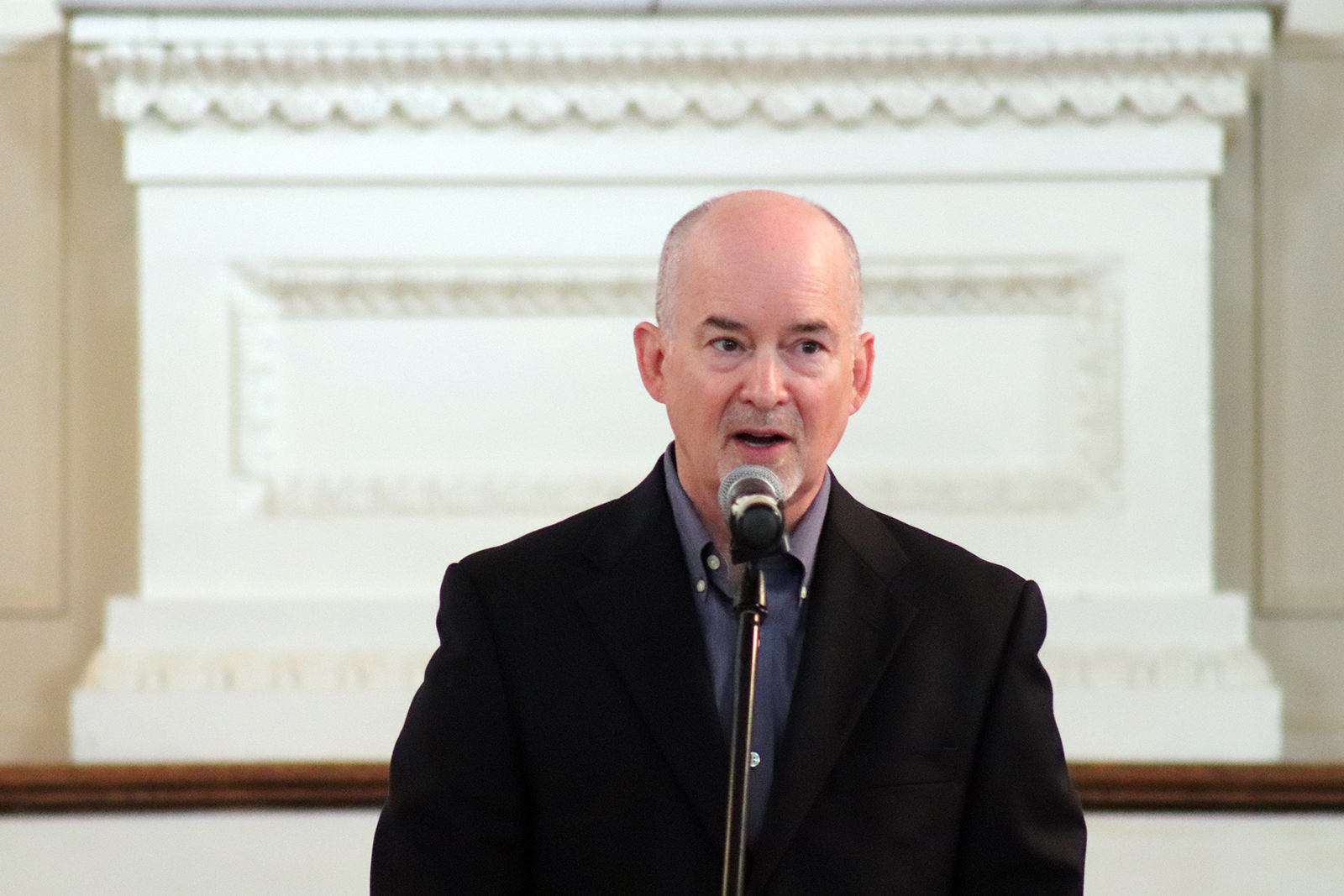
Biographer John H. Wigger speaks about Francis Asbury at Historic St. George’s United Methodist Church, Saturday, Oct. 30, 2021, in Philadelphia. RNS photo by Adelle M. Banks
He was careful to accommodate local culture he encountered, but Wigger said Asbury was haunted for decades by his decision not to push harder to retain a requirement he helped write that Methodist slave owners should free their slaves.
“He prioritized access to all people in every region over confronting injustice and depravity of slavery,” said Wigger.
The events of Asbury’s life gave attendees pause about the state of the country and the United Methodist Church.
Lisa Crawley, a genealogy reference assistant at the National Museum of African American History and Culture in Washington who attended Saturday’s event, said she wished Asbury’s history were as widely taught as that of the Puritans and the Quakers.
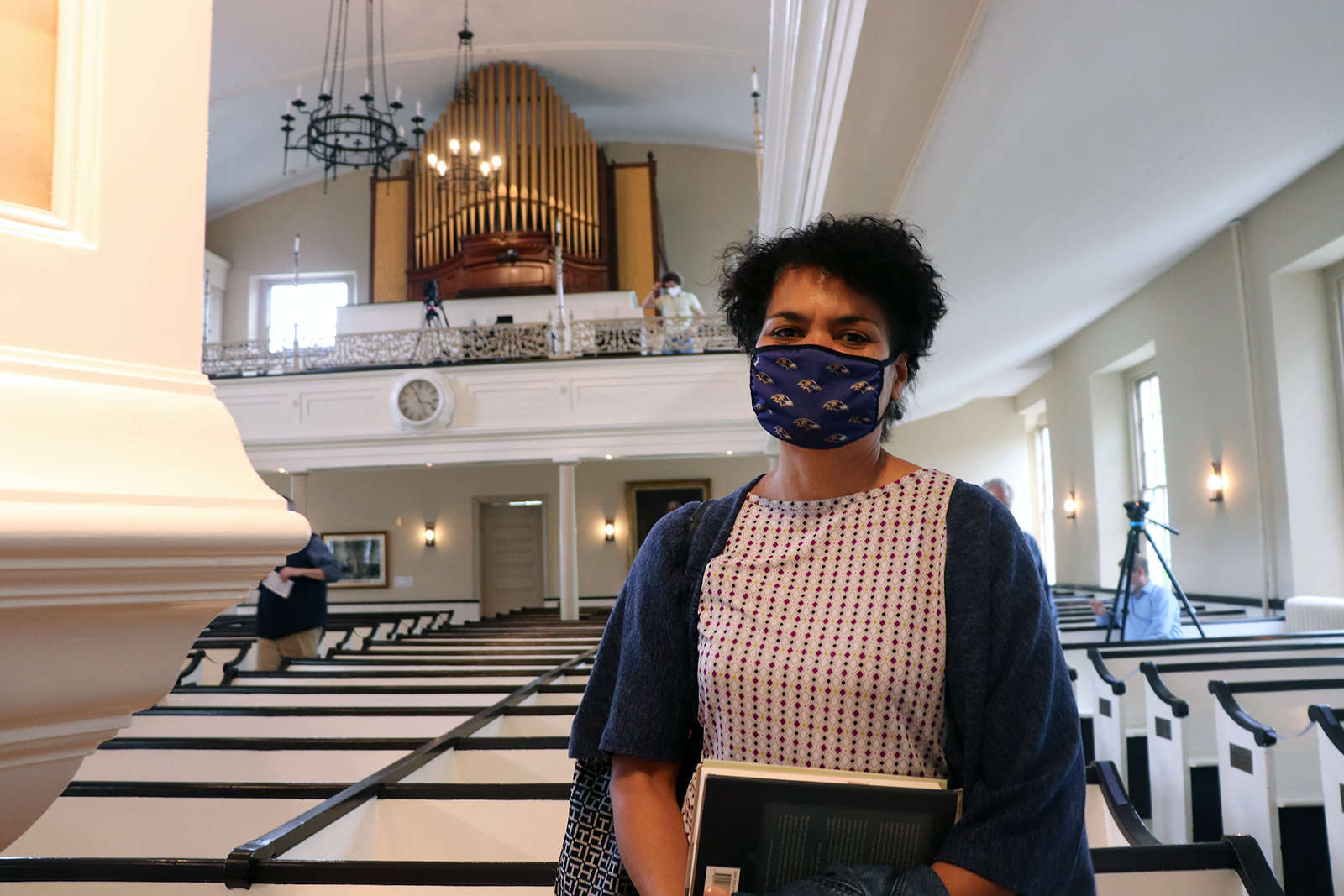
Lisa Crawley at Historic St. George’s United Methodist Church in Philadelphia. RNS photo by Adelle M. Banks
“He is so iconic,” Crawley said of Asbury. “Like we know George Washington and Thomas Jefferson and the Founding Fathers, we should know Asbury better. We should know Asbury. We should know Richard Allen. We should know so many important people in American religious history.”
Ken Price, president of St. George’s board of trustees, said Asbury’s example of connecting with people across the country should guide the denomination as it fights over LGBTQ stances and as its churches struggle to attract younger people.
“When I look at the trouble that the church is in now, we’re not doing such a good job of that,” he said. “I think that’s the answer to what we’ve got to figure out if we’re going to carry the message, the gospel message into the world.”
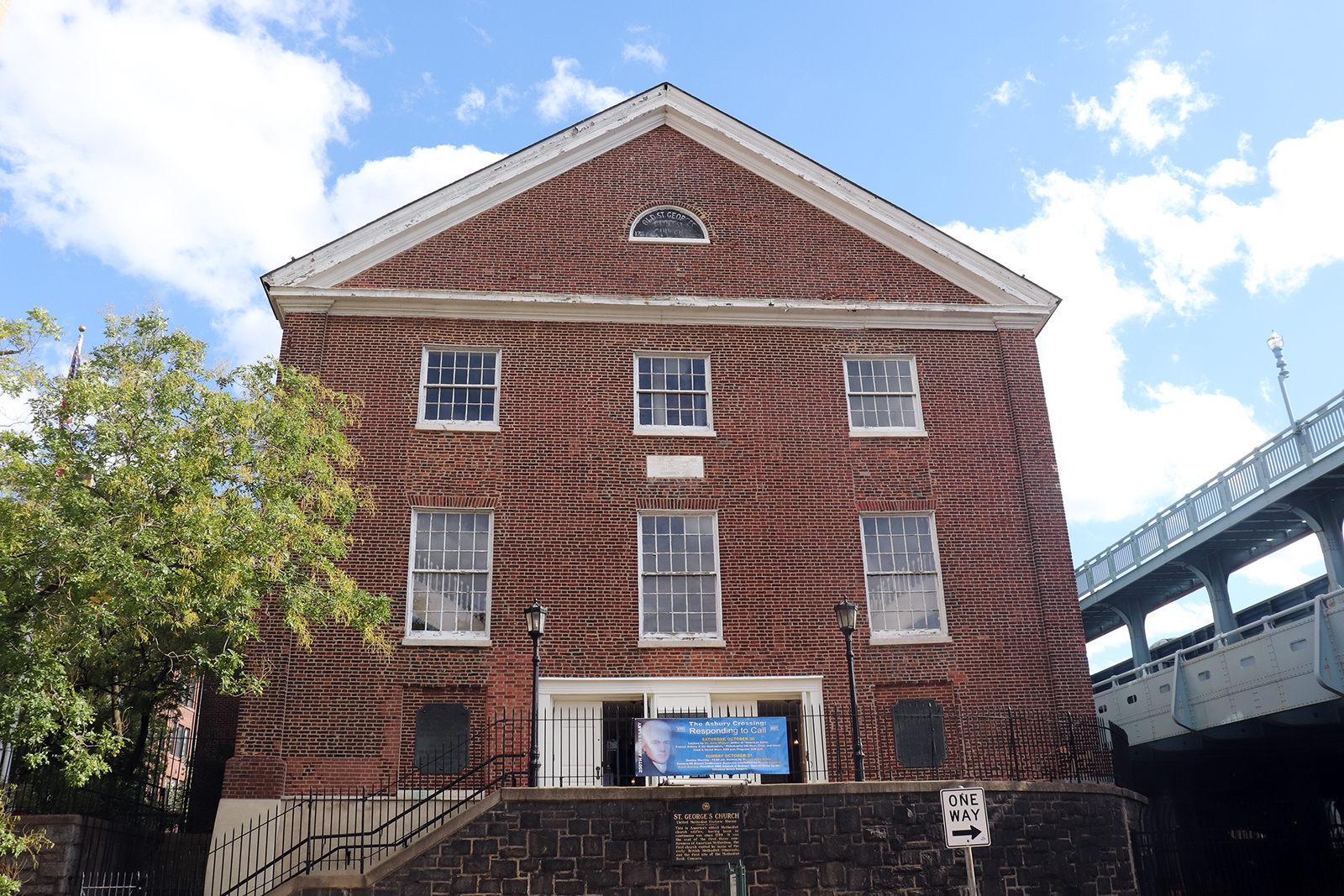
Historic St. George’s United Methodist Church, Saturday, Oct. 30, 2021, in Philadelphia. RNS photo by Adelle M. Banks
RELATED: For 250th anniversary of Asbury crossing, a tour of America’s historic Methodist churches
